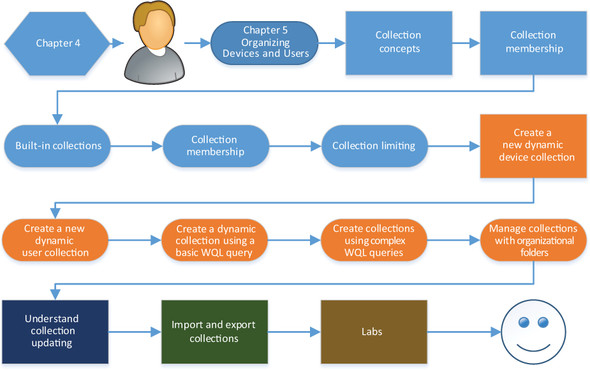Chapter 5. Organizing devices and users
Now that your ConfigMgr environment has been populated with users and devices, it’s time to start organizing them so that you can start making them work for you.
In a ConfigMgr environment, you don’t directly target users and machines on an individual basis mainly because this method of administration becomes difficult to maintain in production when you’re dealing with more than a few hundred objects. Therefore, in ConfigMgr you use collections to group users and devices into logical, business-relevant groups, and you target all your administrative actions on those same collections. If devices and users are the bricks of the ConfigMgr environment, collections are the mortar that binds everything together and lets it stand up.
As shown in figure 5.1, in this chapter you’ll learn about the built-in collections in ConfigMgr; how to create custom collections; how to populate collections with both static and dynamic members; and how to make the most use of Windows Management Instrumentation Query Language (WQL), which underpins all dynamic collections.
Figure 5.1. By the end of this chapter, you’ll be able to make collections to cater to every situation!

Moving forward, almost all the ConfigMgr administrative work you’ll perform will revolve around working with collections, so it’s important to be comfortable with the content in this chapter before moving on.